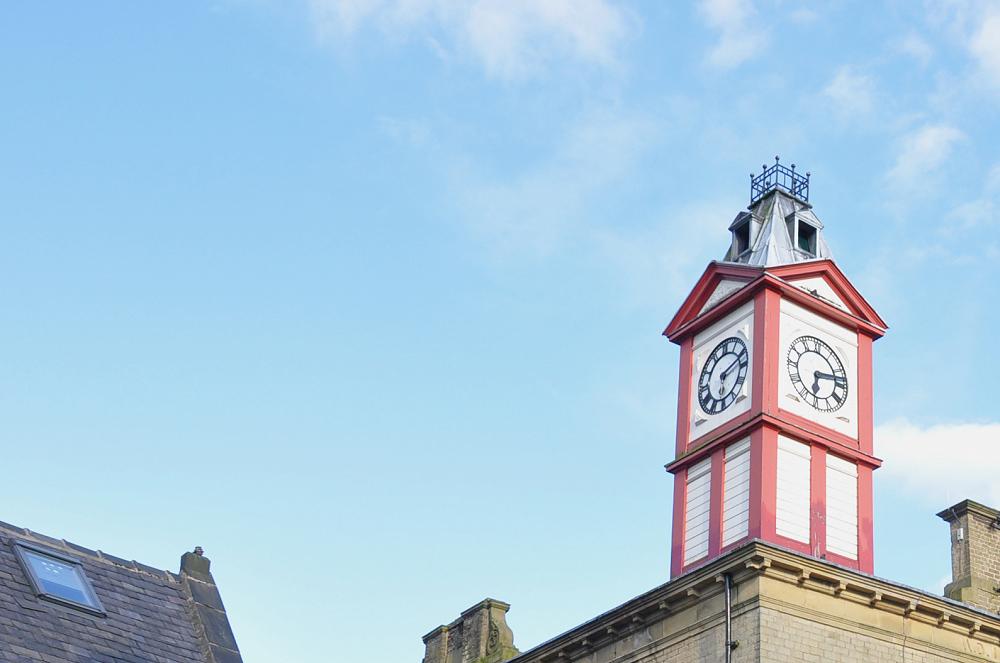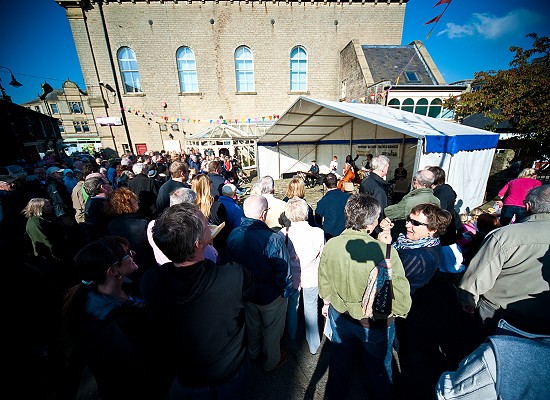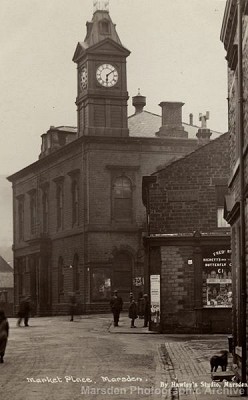
Marsden Mechanics
The magnificently restored nineteenth century Mechanics Institute
The magnificently restored nineteenth century Mechanics Institute
The magnificently restored nineteenth century Mechanics Institute hall is the hub of the beautiful, West Yorkshire village of Marsden, as well as the headline venue for the annual Marsden Jazz Festival.
But did you know it has history as a music venue and starting point for parades?
In the early decades of the 19th Century there was little formal education available to working men and even less for women. With the rise of the industrial revolution, the demand for education was great. Whilst employers helped to meet this demand, recognising an educated workforce would be particularly good for business, it was often groups of workers that came together to undertake self improvement through education, with many of the tutors barely more educated than the men they were teaching.
This movement first appeared at the end of the 19th century with the formation of the literary and philosophical societies, founded all over the country, Leeds, Manchester, Birmingham, Derby, Bristol, Bath, Sheffield, Hull and Whitby.
In Glasgow, based on the city’s literary and philosophical society, the Andersonian was the first technical college to provide scientific instruction with the opportunity for practical application of ideas. It was the first institution in the world to provide evening classes in science to women as well as men.
In 1823, the Andersonian was superseded by Glasgow’s Mechanics’ Institute and was the first in the country. Mechanics’ Institutes were then developed all over the country.
It was November 1841 when the Mechanics’ Institution in Marsden held its first meeting in a cottage near to the Old New Inn, on Carrs Road. Very little is known of the activities in the Institution’s first home. On the 16th March, a vocal and instrumental concert was held in the Institution’s ‘large room’ with the Marsden Military Band providing the music. This was the first event of its kind, but the room was not large enough to accommodate the numbers who applied for admission. According to Lewis(1), the Mechanics moved from its first location to the large room above Dan Ineson’s Smithy at Ing Head off Carrs Road.
By the middle of the 1850s, the membership of the Institution had grown to such a size that J. B. Robinson a local mill owner and President of the Institution planned to build a new hall which would become the present day building. The building would contain two classrooms that could be converted into a single room if necessary, a reading and news room, a library, rooms for a caretaker and a hall (75 feet long, 38 feet 4 inches wide, 26 feet high). It had a gallery with a committee room underneath it. It was claimed in the newspapers of the time that the hall could comfortably seat 1000 people.
The laying of the Foundation Stone was a major village event. On 9th June, 1859, a glorious summer’s day, the Stone was laid. The celebrations began with a parade that started outside the New Inn on Manchester Road. It moved on to the the Rising Sun located at West Slaithwaite, returning along Carrs Road to the Marsden Foundry, ending up at the site of the new building. The parade was led by Mr John Crowther on horseback and made up of the building committee, the police, members of other local mechanics institutions, Sunday Schools’ pupils, school masters and visitors. There were four bands providing the music and the public were invited to follow behind.
The Hall was finally opened in 1861. It had cost around £2500, far more than the original plans, and it took many years for the remaining debt to be paid off. When the building was finished there was no clock tower. It was built as a result of a legacy left by William Henry Firth. However, the building’s foundations and walls were not strong enough to bear the extra weight of a stone tower. Consequently, the tower was built of wood.
The Mechanics institute continued to be a venue for public celebrations, with spells as a library, a nursery and a youth club, until the hall fell into disuse around 1969.
Marsden Community Association, formed in 1978, aimed to take the buidling back into community ownership. This took many years, a significant milestone being the near £1million pound refurbishment and modernisation plan and reopening in 1990/1. It was a plan that finally came to fruition in 2016, when the Marsden Community Trust took over ownership of the hall that was built for the people of Marsden through public subscription.
Further Reading
Bygone Marsden. Lewis Buckley Whitehead(1)
Journal of the Huddersfield Local History Society – Marsden Mechanics Institute before the Hall. Steve Challenger
Journal of the Huddersfield Local History Society – Marsden Mechanics Institute: the Hall and final years. Steve Challenger
Thanks to Alan Matthews and Tom Lonsdale for additional information.










